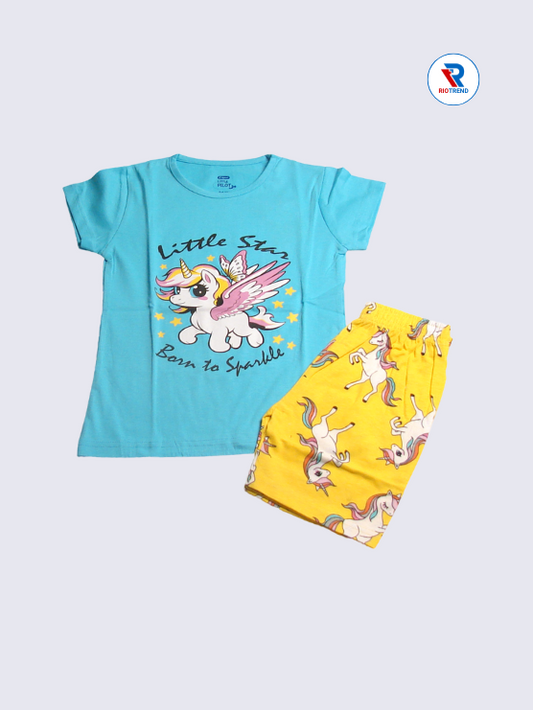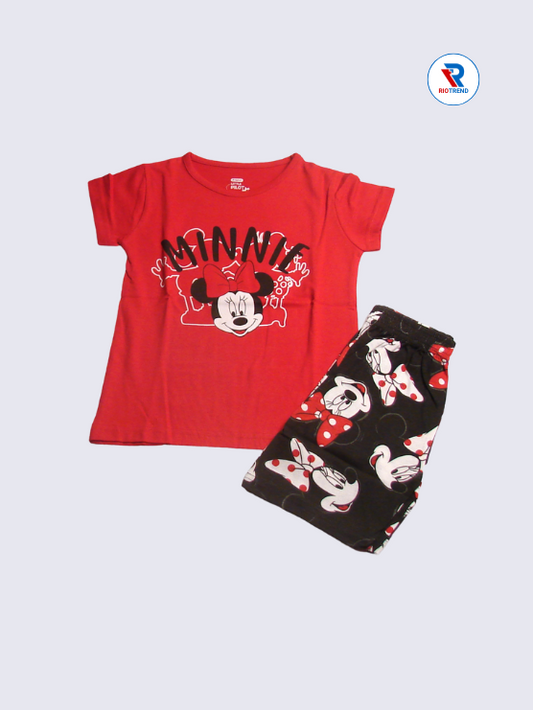Did you know that 78% of Indian online shoppers abandon their carts when they encounter unexpected currency conversion charges? If you've ever been excited about a purchase from an international website, only to discover hidden fees or confusing exchange rates at checkout, you're not alone.
The problem is clear: multiple currency options in online shopping can be a maze of confusion, leading to overpaying, unexpected charges, and missed opportunities for better deals. Many Indian shoppers lose hundreds of rupees monthly simply because they don't understand how international payment processing works.
In this comprehensive guide, you'll discover everything about multiple currency shopping, from understanding exchange mechanisms to choosing the best payment methods. You'll learn actionable strategies to save money, avoid hidden fees, and shop internationally with confidence. By the end, you'll be equipped with expert knowledge to make informed decisions every time you encounter foreign currency options online.
What is Multiple Currency in Online Shopping?
Multiple currency refers to the ability of e-commerce platforms to display prices and accept payments in different currencies beyond their base currency. When you shop internationally, you encounter this feature whenever a website offers you the choice between paying in the local currency (like rupees) versus the website's native currency (like pounds, euros, or yen).
This system exists because online businesses want to make shopping accessible to customers worldwide. Instead of forcing everyone to calculate exchange rates manually, stores offer currency conversion services directly at checkout. However, this convenience often comes with a cost that many shoppers don't immediately recognize.
For Indian consumers, understanding multiple currency options is crucial because it directly impacts your purchasing power. The difference between choosing the right currency option versus the wrong one can mean saving or losing ₹200-500 per transaction, and for frequent international shoppers, this adds up to thousands annually.
The key insight is that multiple currency isn't just about convenience—it's about understanding where and how your money gets converted, who controls the exchange rate, and which option gives you the most rupees for your international purchases.
How Multiple Currency Payment Processing Works
When you make an international purchase, your transaction goes through a complex currency exchange process involving multiple parties. Understanding this journey helps you make better decisions and avoid unnecessary costs.
First, when you select a foreign currency payment option, your bank or payment processor must convert your rupees into the target currency. This conversion happens in real-time using current exchange rates, but here's where it gets interesting—different processors use different rates and add varying fees.
Dynamic Currency Conversion (DCC) is a common system where the merchant's payment processor offers to convert the foreign currency into rupees at checkout. While this seems helpful, DCC typically uses exchange rates that are 3-5% worse than what your bank would offer, plus additional processing fees.
Alternatively, international payment processing through your Indian bank or credit card company often provides better rates. When you choose to pay in the website's original currency, your bank handles the conversion using wholesale exchange rates, which are typically more favorable.
The multi-currency checkout process also involves security considerations. International transactions trigger additional fraud protection measures, which can sometimes delay or block payments. Understanding this helps you prepare by notifying your bank about international purchases beforehand.
Real-world example: If you're buying a ₹5,000 item from a European website, choosing DCC might cost you ₹5,250, while letting your bank handle conversion might only cost ₹5,150—a ₹100 difference on a single purchase.
Types of Multiple Currency Options Available
Merchant-Based Currency Conversion
Merchant-based currency conversion occurs when the online store offers to convert prices into rupees during your shopping experience. You'll see prices displayed in ₹ symbols alongside the original currency, making it easy to understand costs upfront.
This option provides transparency in pricing but often comes with marked-up exchange rates. The convenience of seeing rupee prices immediately is appealing, but merchants typically add 2-4% to the actual exchange rate to cover their processing costs and generate profit.
Bank-Side Currency Processing
Bank-side currency processing happens when you choose to pay in the original currency, allowing your Indian bank to handle the conversion. Most major Indian banks offer international transaction services with competitive exchange rates, especially for premium account holders.
This method often provides better exchange rates but requires you to calculate approximate costs manually. The final amount appears on your statement only after processing, which can take 1-2 business days for the exact conversion rate to be applied.
Credit Card Currency Services
Credit card currency services offer another layer of multi-currency payment solutions. Premium credit cards often provide better exchange rates and lower foreign transaction fees compared to debit cards or basic credit cards.
Some credit cards waive foreign transaction fees entirely or offer rewards points for international purchases, making them the most cost-effective option for frequent international shoppers. However, interest charges on credit card balances can quickly negate these benefits if not managed properly.
Benefits of Multiple Currency Shopping for Indian Consumers
Multiple currency shopping opens up a world of opportunities for Indian consumers, extending far beyond simple convenience. The primary advantage is access to global marketplace diversity, where you can find products, brands, and deals unavailable in the domestic market.
Cost savings potential represents another significant benefit. Many international retailers offer better prices than Indian importers, even after accounting for shipping and currency conversion. Electronics, books, specialized equipment, and seasonal items often cost 20-40% less when purchased directly from international sources.
Product availability becomes virtually unlimited with international e-commerce access. Whether you need specific technical components, rare collectibles, or the latest fashion trends, cross-border shopping eliminates geographical limitations that previously restricted consumer choices.
The competitive pricing advantage of multiple currency shopping extends to services as well. Software subscriptions, digital products, and online courses often offer regional pricing that can be significantly lower than standard Indian pricing, particularly when exchange rates are favorable.
Quality and authenticity assurance is another often-overlooked benefit. Shopping directly from brand websites or authorized international retailers eliminates concerns about counterfeit products that sometimes appear in local markets, ensuring you receive genuine items with proper warranties.
Understanding Exchange Rates and Fees in Multi-Currency Transactions
Exchange rate mechanics in multiple currency transactions involve several layers of fees and markups that can significantly impact your final costs. The base exchange rate, often called the interbank rate, is the true value of one currency against another, but consumers rarely access this rate directly.
Currency conversion fees typically range from 1.5% to 5% depending on your payment method and financial institution. Banks add these fees to cover processing costs and foreign exchange risks, but the actual rates vary significantly between providers.
Hidden charges in international payments often include payment processor fees, international transaction fees, and sometimes even receiving fees charged by the merchant's payment system. These can add another 1-3% to your transaction cost, making a seemingly good deal much more expensive.
Real-time exchange rate fluctuation means the rate you see during shopping might differ from the rate applied when your transaction processes. For large purchases, this fluctuation can result in differences of ₹100-500, depending on market volatility and processing delays.
Understanding foreign exchange margins helps you make better decisions. Different payment methods apply different margins to the base exchange rate—typically, international debit cards have margins of 3-4%, while specialized forex cards might offer margins as low as 1-2%.
The timing of currency conversion also matters. Some systems convert immediately at purchase, while others convert when the transaction settles with your bank, which could be 1-3 days later. During volatile periods, this timing difference can work for or against you.
Advantages of Using Multiple Currency Payment Methods
Payment flexibility stands as the foremost advantage of multiple currency systems, allowing Indian shoppers to choose the most cost-effective payment method for each transaction. This flexibility becomes particularly valuable when exchange rates fluctuate or when specific payment methods offer promotional rates.
Budget control and transparency improve significantly with proper currency payment options. When you understand the total cost upfront, including all fees and exchange rates, you can make informed decisions and avoid unexpected charges that could strain your budget.
Transaction security in international payment systems has evolved considerably, with modern multi-currency platforms offering advanced fraud protection, encryption, and dispute resolution mechanisms. This security often exceeds that of domestic-only payment systems due to stringent international compliance requirements.
Reward optimization becomes possible when you strategically use different currency payment methods for different types of purchases. Some credit cards offer bonus points for international transactions, while others provide better exchange rates, allowing you to maximize benefits based on your spending patterns.
Speed and convenience of multiple currency transactions have improved dramatically with modern payment processing. Many international purchases now process as quickly as domestic ones, with instant payment confirmation and rapid order processing.
Risk diversification occurs naturally when you spread your international purchases across different payment methods and currencies. This approach protects you from potential issues with any single payment provider or currency pair, ensuring continued access to international shopping.
Essential Tips for Smart Multiple Currency Shopping
Research Exchange Rates Before Shopping
Exchange rate research should become a habit before making any international purchase. Use reliable financial websites or apps to check current rates and identify whether it's a favorable time for currency conversion. Even a 1-2% difference in exchange rates can save you significant money on larger purchases.
Set up rate alerts for currencies you frequently encounter in your shopping. This proactive approach helps you time purchases for maximum savings and avoid buying during unfavorable exchange periods.
Choose the Right Payment Method
Payment method selection significantly impacts your total costs. Compare foreign transaction fees across your available cards and banking options. Many premium credit cards offer zero foreign transaction fees, making them ideal for international purchases despite annual fees.
Consider forex cards for frequent international shopping. These prepaid cards allow you to lock in exchange rates during favorable periods and avoid real-time conversion fees, though they require advance planning and loading.
Understand Total Cost Calculations
Total cost transparency requires calculating all potential fees before purchase. Add foreign transaction fees, currency conversion charges, shipping costs, and potential customs duties to get the true price comparison against domestic alternatives.
Use cost comparison tools or spreadsheets to track the real costs of international purchases over time. This data helps you identify which merchants, payment methods, and currencies consistently offer the best value for your specific shopping patterns.
Create a purchase decision framework that includes minimum savings thresholds. For example, only shop internationally when the total savings exceed ₹500 or 15% compared to domestic options, ensuring the effort and potential complications are worthwhile.
Final Thoughts
Multiple currency shopping represents a powerful tool for savvy Indian consumers, offering access to global markets, competitive pricing, and product variety unavailable domestically. The key to success lies in understanding the mechanics of currency conversion, choosing appropriate payment methods, and making informed decisions based on total cost calculations rather than just displayed prices.
Remember that international e-commerce success requires preparation, research, and strategic thinking. By applying the tips and insights from this guide, you can confidently navigate multiple currency options, save money on international purchases, and expand your shopping horizons while protecting your financial interests.
Start implementing these strategies with small purchases to build confidence and experience before making larger international transactions.
Multiple Currency FAQ's
Is it better to pay in rupees or the website's original currency when shopping internationally?
Generally, it's better to pay in the website's original currency and let your Indian bank handle the conversion. This typically offers better exchange rates than merchant-provided currency conversion services.
What are the typical fees for multiple currency transactions?
Foreign transaction fees typically range from 1.5% to 5% of the purchase amount, depending on your bank and payment method. Premium credit cards often offer lower or zero foreign transaction fees.
How can I avoid hidden charges in international online shopping?
Always read the complete payment terms, compare total costs including all fees, and choose payment methods with transparent fee structures. Avoid dynamic currency conversion when possible.
Which credit cards are best for international online shopping from India?
Look for cards with zero foreign transaction fees, good exchange rates, and strong international fraud protection. Premium cards often offer these benefits along with additional travel and purchase protections.
How do I know if I'm getting a good exchange rate?
Compare the offered rate with current interbank rates available on financial websites. A good consumer rate should be within 2-3% of the interbank rate for most payment methods.
What should I do if my international transaction gets declined?
Contact your bank immediately to inform them about international purchases, ensure your card is enabled for international transactions, and verify that you haven't reached daily transaction limits.









